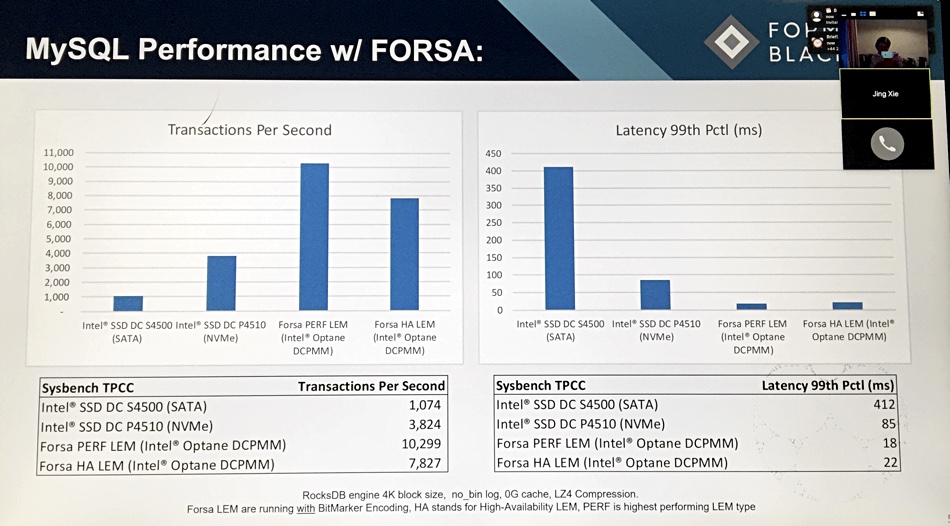Formulus Black’s Forsa software gives applications an Optane persistent memory boost with no app software changes needed.
Intel’s Optane 3D XPoint media drives are faster than flash and but Optane’s is fastest when used as memory, as opposed to storage. This requires application software changes. The software has to add code to select and move data between DRAM, which is volatile, and Optane memory, which is not. The combination of this difficulty and Optane’s expense has slowed Optane adoption by software vendors.
Intel has devised adaptions for specific software such as SAP but a general application software adaptation method would be helpful. And this is where Formulus Black, a venture-backed in-memory computing vendor, comes in.
The company’s Forsa software accelerates applications by disassembling them into Forsa bit markers and then running these in memory.
Jing Xie, Formulus Black COO, this week briefed Blocks & Files on the new technology. In July 2019, Forsa was upgraded to make use of Optane’s app direct mode. It uses a Logical Extended Memory (LEM) construct. At the time we wrote “Forsa amplifies the available memory up to fourfold so that 3TB of DRAM looks like 12TB.”
That means any application software inside the Forsa framework with LEMs can use Optane’s app direct mode and so run faster.
Forsa benchmarks
Formulus Black recently ran benchmarks with Intel using the MySQL database and a variety of Intel media:
- DC S4500 3D NAND TLC SATA SSD
- DC P4510 3D NAND TLC NVMe SSD
- Optane DCPMM – Optane DIMM

The transactions per second and latency results shown in the slide above. The Forsa PERF LEM refers to Forsa running in a single system, with Forsa HA LEM referring to a high availability implementation using two systems.
Starting with the P4510 as a base line (3,824tps),Forsa did 2.7x more transactions per sec using the Optane DIMM (10,299tps). The P4510’s latency (at the 99th percentile) was 85ms and the Optane DIMM-assisted Forsa achieved 18ms.
Running in high availability mode slowed the Forsa-Optane DIMM system to 7,827tps with 22ms latency.
The comparison with SATA SSDs shows the Forsa-Optane DIMM combo doing almost ten times more transactions per second.
According to Xie, servers are turbocharged when running Forsa with Optane DIMMs. This combo enables customers to get more use out of server cores, and to run more applications in a server, with those applications able to do more.
If your applications could benefit from being run in-memory – and you can justify purchasing Optane DIMMs – think about running a proof of concept with Formulus Black’s Forsa.







